This was published 3 years ago
Coronavirus and tourism: Experts predict 11 ways the pandemic will change travel
By Hannah Sampson and Natalie B. Compton
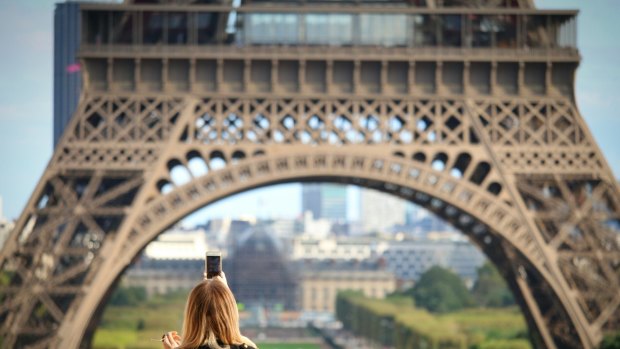
You'll have to book a timeslot to visit the Eiffel Tower and the Louvre in Paris.Credit: Getty Images
Unlike many of history's great tragedies, the coronavirus pandemic never stunned us with one catastrophic event. Instead, the deadly problem quietly snaked its way around the world, devastating millions as it grew into a global health crisis.
Our realities shifted slowly at first, and before we knew it, the coronavirus took over completely.
As we closed borders, cancelled events and self-quarantined at home on a mass scale, the travel industry, as well as most other sectors, began to nosedive. The collective effort to save lives meant economic catastrophe for an industry that profits from people leaving their houses.
The wound inflicted by the pandemic on the travel industry is deep, and it hasn't stopped bleeding yet.
In a May 20 call with analysts, Royal Caribbean Cruises chief executive Richard Fain recalled how drastically travel changed after the 9/11 terrorist attacks - and how the "new normal" eventually just became normal. He expects to see a similar phenomenon in the post-coronavirus world.
"Travel and tourism will grow," he said. "Not by reverting to what it was, but by adjusting to a world where all activities, everything we do in the world will have changed."
Despite covid-19 continuing to claim lives, locations around the world are beginning to open again. More travellers are getting on planes. Airlines are reinstating routes. Countries and states have begun to welcome visitors, despite the remaining risks.
For now, travel may look different in a number of ways. People can expect to explore a world of face masks, physical distancing, closed businesses and two-week quarantines.
But what changes can travellers expect in both the short- and long-term? We spoke with experts to get their best predictions on an uncertain future.
Attractions: Expect fewer crowds and experiences at tourist magnets
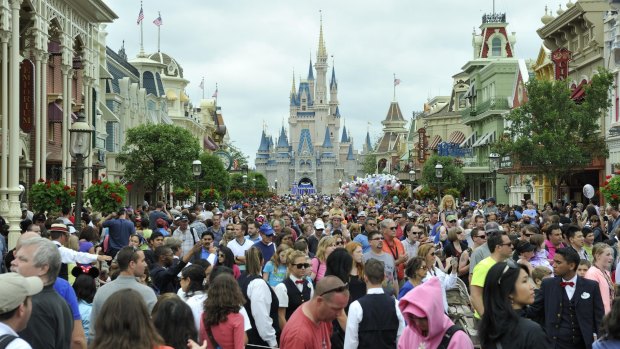
Credit: Alamy
Theme parks, museums and iconic landmarks are known for drawing a crowd. But as they reopen and look to the future, those crowds are expected to be much smaller - and more controlled.
In revealing plans to welcome visitors back this month and next, operators of some of the world's largest theme parks painted a picture of what they expect a coronavirus-era "normal" to look like inside their gates. The scene: mandatory temperature checks; visitors and crew in masks; rides, lines and seats spaced to allow for social distancing; and characters that interact from afar, if at all.
"In preparing to reopen during this unusual time, we have to manage our theme parks in a very different way from what we've known before," the Walt Disney Co said in a statement announcing plans for a phased reopening of its Florida parks starting July 11.
At its Disney Springs shopping complex in central Florida, which started to reopen in May, Star Wars Stormtroopers keep watch from a balcony and issue warnings to visitors about wearing masks and staying distanced.
SeaWorld Orlando said it would modify some animal interactions, one of the park's signature offerings. Universal Orlando Resort announced it would move to virtual lines for some attractions. Disney is doing away with fireworks shows and parades for now. And Six Flags said all parks would move to an online reservation system to manage how many people could attend and assign guests staggered arrival times.
Museums, too, are trying to envision a future where visitors will feel safe. The Smithsonian museums and the National Zoo in Washington, which drew more than 22 million visits last year, have not announced reopening dates, but plans call for only a few to open at first.
Capacity will be limited, and there may be more staff on hand to keep people appropriately distanced from each other. Face masks for everyone and cleaning throughout the day are also expected.
In Paris, the Louvre - which has long struggled with overcrowding - will require all visitors to book a time slot once the museum opens on July 6.
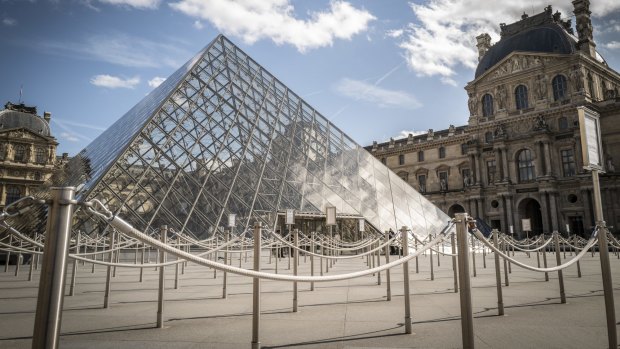
Credit: Getty
Bruce Poon Tip, the founder of tour company G Adventures, said he expects more of the world's tourist magnets to take after the Louvre and Disney. For his company, which typically takes 250,000 travellers on tours in more than 100 countries every year, that will require a lot more pre-planning and figuring out the new procedures at various sites.
"Some of the most iconic destinations, iconic attractions that people want to see, they might be scheduled - in the short term, anyways," Poon Tip said. "So we have to be able to navigate that."
Airlines: Airlines will have to balance safety and profits
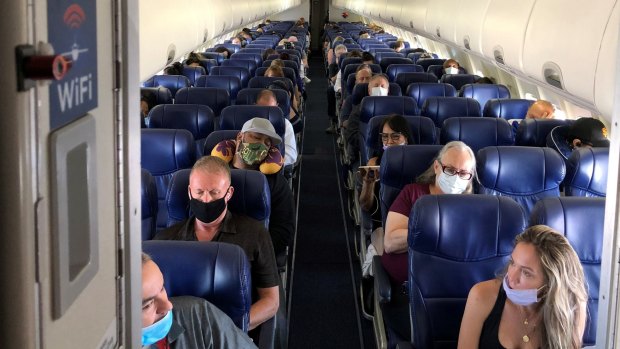
Credit: TNS
Unlike many travel companies, airlines have continued to operate throughout the pandemic, although at drastically reduced numbers. Practices they have adopted over the past few months are likely to shape the future of flying, though some are certainly short-term fixes.
Blocking off some seats on planes or limiting the number of tickets sold, for example, is unlikely to be the status quo as more people start to fly. Such measures aren't even guaranteed today across the board.
"You're going to definitely have to sit next to a stranger again, I'm afraid, on a plane," JetBlue chief executive Robin Hayes said during a Washington Post Live discussion last month. "Because [of] the economics of our industry, most airlines have a break-even load factor of 75 to 80 per cent, so clearly capping flights at 55 to 60 per cent, which is what we're doing right now through July 6, is not sustainable."
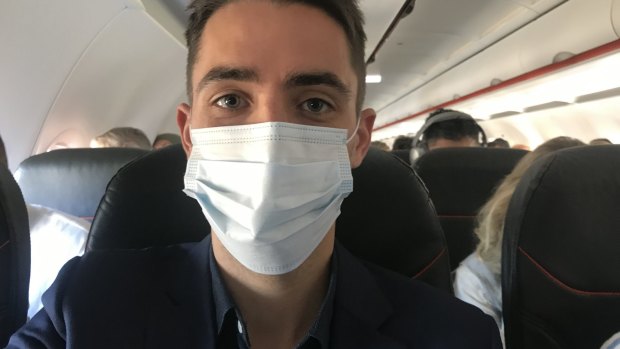
Credit: Josh Dye
He said he believes airlines will need to make it easier in the future for travellers to change their flights - a decision that, before the pandemic, came with hefty fees at most carriers.
"Because it's not ever really going to be acceptable, I don't think, for someone who is unwell to feel that they're being made to fly," he said.
Airlines are already requiring passengers and employees to wear masks, cutting food and beverage service during flights, and increasing how often they clean. Some have started asking travellers to fill out health questionnaires and checking passengers' temperatures, but there is a broader push to have federal authorities take over those checks.
The International Civil Aviation Organisation, a UN agency, put out guidance recently that includes many of the changes already underway. But it also says that airlines should restrict access to lavatories and encourage passengers to only carry on luggage that fit under their seats.
Airports are also making changes, and the pandemic could force an overhaul of the way passengers move through the facilities, said Ty Osbaugh, the aviation leader at architecture firm Gensler.
He said he would not be surprised to see significantly more biometric screening and touchless elements within the next six to eight months. He envisioned a system that could scan his face, direct him to a TSA lane and use biometrics to let him buy anything in the airport without taking his wallet out.
"If I could go from curb to gate without physically touching anything, it kind of solves some of the pandemic issues," he said. "I think there's a lot of people who would prefer to do that."
Domestic travel: Wary travellers will stay closer to home
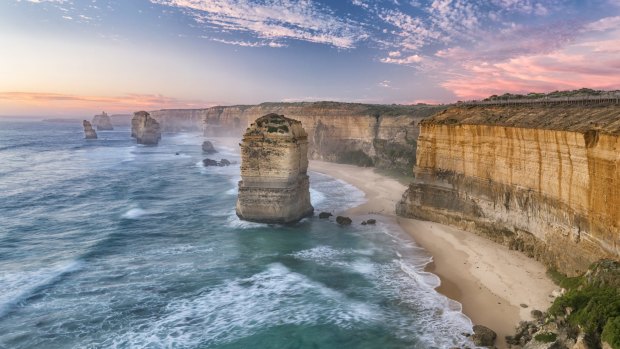
Credit: 4FR
Before anyone starts hopping on long flights or jetting around the world, experts believe they will first start venturing out closer to home.
Travel insurance comparison site Squaremouth said that based on travel insurance policies purchased through its site between April 1 and May 10 for travellers from the US this summer, domestic trips account for 48 per cent of planned summer travel, an increase from 15 per cent last year. And booking site Travelocity noted that most hotel bookings are within 100 miles of where travellers live.
"Our research actually says that leisure travel is going to be among the first to come back," said Roger Dow, the chief executive of the U.S. Travel Association, in a media call last month. "It'll be drive and shorter flights regionally."
To create consistency across travel companies in the United States, the association released a set of guidelines last month that called for revamping public spaces to allow for physical distancing, installing barriers, moving toward touchless technology and stepping up sanitation.
But travellers within the United States should not expect consistency in the near term when trying to visit other states. Some places, including Hawaii and Maine, are either requiring most visitors to quarantine for two weeks after arriving or to show proof of a negative covid-19 test. And local rules about what can and can't be open, and how many people can gather, could vary from city to city.
"Part of re-opening and recovery means that destinations, attractions, hotels, airlines, etc. will need to demonstrate to potential visitors that they are doing everything they can to minimise the risk as they travel to and once they are in the destination by following best practices," Amir Eylon, the chief executive of tourism-focused consultancy Longwoods International, said in an email. "They will also need to demonstrate to the local residents, who may be wary, that they are asking visitors to 'play by the rules.'"
International travel: Fewer travellers could mean more expensive travel abroad
While it can feel like airlines charge passengers for everything from choosing a seat to checking a bag, in reality, deregulation lowered the cost per mile for flying, making international travel more accessible than ever before.
But some worry that the impact of the pandemic on airlines may translate to less travellers flying abroad, and, as a result, will make other parts of international travel more expensive.
"If the airlines can only put half as many people on the plane, it's going to cost a whole double," says Rick Steves, the Washington-state-based European travel expert known for his guidebook series, public television and radio shows, and travel company that takes more than 30,000 people to Europe in a typical year. "I can afford it, but many travellers cannot. Then travel becomes an activity just for wealthy people."
The issue is not only limited to airlines. Steves fears that by not being able to "pack the house," establishments that make travel special such as mom-and-pop restaurants, hotels and entertainment venues will have to raise their prices to make up for the limited headcount.
Many cities around the world depend on international tourism and have felt the hit during the pandemic. According to the United Nations World Tourism Organisation (UNWTO), the decline in international tourism for the rest of 2020 could translate to $US910 billion to $1.2 trillion in lost revenue for the industry.
Saving some of those billions will depend on when and how the world reopens. In a May report, UNWTO Secretary-General Zurab Pololikashvili said: "The timely and responsible easing of travel restrictions will help ensure the many social and economic benefits that tourism guarantees will return in a sustainable way."
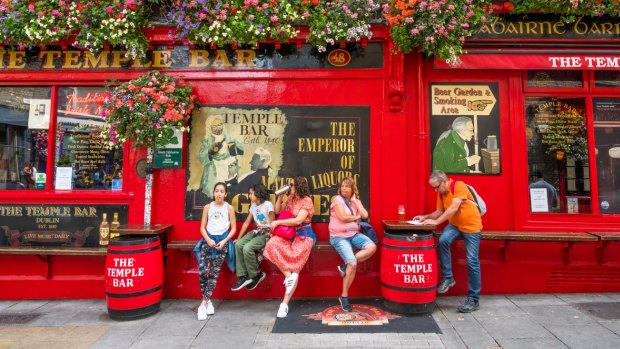
Credit: iStock
The not-so-socially distant elements of international travel that we love so much seem impossible to fully embrace while covid-19 remains without a vaccine. Will we get over virus fears and return to travel joys, such as eating street food in Bangkok, dancing in crowded Tel Aviv nightclubs or staying in a South African hostel with bunk beds?
Steves is confident those beloved aspects of going abroad will make a return after the pandemic subsides.
"You go to an Irish pub to sit next to a stranger and drink beer. You go to France to have your cheeks kissed," he said. "I think that's going to come back, but it's gonna be a while."
Cruises: Buffets out, temperature checks in when ships return to sea
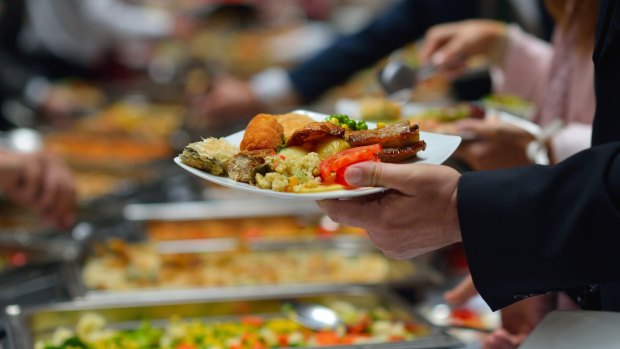
Credit: iStock
Two big questions have been swirling around the cruise industry since operators halted sailings in mid-March: When will ships take passengers back to sea? And what will cruising look like in the future?
While the world's largest companies have not shared comprehensive details yet on what cruisers should expect, some things are clear: Cruise ships will not return to the sea all at once. When they do, they probably will not be as packed as they were in pre-coronavirus days. Temperature screenings, while incapable of catching asymptomatic travellers, will probably become the norm. The old-fashioned, dish-it-yourself buffet is expected to become a relic. Construction of new ships will almost certainly be delayed, and itineraries could be tweaked for a while.
"I think in the beginning, we are likely to see more focus on shorter cruises and on going to places where we can do more to control the environment," says Fain, the Royal Caribbean Cruises CEO.
Carnival Cruise Line and Norwegian Cruise Line have both said they intend to start sailing with a small portion of their fleets.
"Our goal is to preserve the traditional elements of the cruise experience - the great value, the multiple destinations visited, the wide array of dining, entertainment offerings - modified as necessary as to the many changes we are becoming accustomed to in our daily lives," Norwegian Cruise Line Holdings chief executive Frank Del Rio said during a recent call with analysts.
What is meant by "modified as necessary" isn't clear across the board, at least from the world's largest operators. Norwegian Cruise Line said recently that it would replace existing filters with what it called "medical-grade air filters" and institute touchless temperature checks, buffets with servers, reduced capacity, staggered embarkation times and enhanced cleaning, among other changes.
The Centres for Disease Control and Prevention has said cruise line plans must include temperature checks, medical screenings, testing for the coronavirus and social distancing protocols.
Several smaller lines - some of which are planning to sail again as soon as late June - provide a glimpse at what passengers could expect. Temperature checks will be mandatory, self-service buffets will be suspended, capacity on tour buses will be limited during shore excursions, and public surfaces will be sanitised more frequently.
Still unclear: How many people will be eager to set sail again, given the global toll of the virus and the high-profile outbreaks on ships. But cruise executives say they are optimistic based on bookings for 2021.
"I think in the early going, we have plenty of people who love cruising who will be able to fill the ships that will be available at the time," Carnival Corp. chief executive Arnold Donald said in April.
See also: Goodbye DIY waffles: Coronavirus may end hotel breakfasts as we know it
Home Sharing: Relocation will increase demand for home rentals
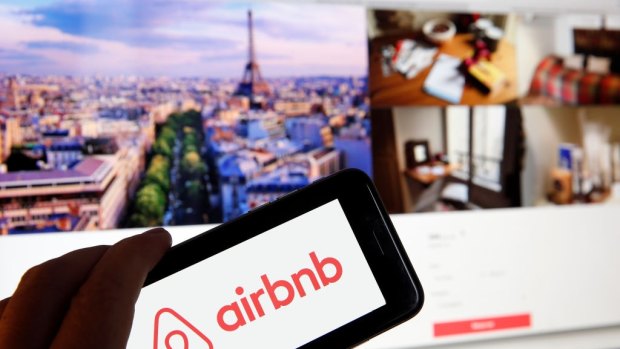
Credit: Getty Images
During the pandemic, many companies and their workforces learned productivity was possible outside of the office. Now that working remotely has entered the mainstream, we may see a new trend of people taking longer trips that combine work and pleasure.
"A lot of people have gotten comfortable that they don't have to squeeze a nine-day vacation into six. They can take the extra days and maybe work a couple half-days remotely," said vacation-rental company Vrbo president Jeff Hurst. "I do think we're going to start to see people be more creative on how they think about working from any house, as opposed to just their own house, or any destination as opposed [to] from just their office."
It's a trend Airbnb chief executive Brian Chesky believes was already in motion.
"I had assumed over the course of 20 years that a generation of people would not be tethered to their city ... that people will realise over the course of working more remote, they could kind of live anywhere," Chesky said. "I never thought that decades would happen in two months."
In April, Airbnb added a new feature on its homepage advertising "monthly stays" to accommodate the growing interest of long-term travel. At the peak of the pandemic shutdowns, about 40 per cent of Airbnb's bookings were long-term.
That number has dropped since; however, Chesky predicts travellers' interest in long-term stays will continue to grow with time. "I couldn't overstate this enough; I think this is a very big, profound shift," he said.
The long-term travel trend will be more beneficial for home rentals than hotels, as they offer travellers a more comfortable stay at a more affordable price. An Airbnb with a kitchen and a garage is more approachable for day-to-day living than a 400-room hotel where a traveller is bound to room service and outside restaurants.
Another major change in the vacation rental market since the pandemic began has been an overhaul of cleaning protocols. Once upon a time, the cleanliness star rating on an Airbnb review was just another detail travellers checked before booking a vacation rental. Then coronavirus redefined the importance of cleanliness.
Companies such as Airbnb and Vrbo created new cleaning procedures for hosts to follow in the pandemic. These enhanced sanitation steps were designed to not only keep travellers safe, but also to reassure them that it's OK to travel again. And unlike emergency cancellation policies put into place during the pandemic, some experts believe this new emphasis on sanitation will extend into the future.
"Covid-19 has heightened consumer awareness around cleanliness, which is why we released our cleanliness guidelines to educate vacation homeowners, property managers and travellers about how vacation rentals should be cleaned and disinfected," Hurst said. "As long as travellers are finding the information provided by our partners helpful, there's no reason for it to go away."
See also: Choose your sanitiser: What it's like to stay in a Aussie hotel now
Private: Interest in private travel is here to stay
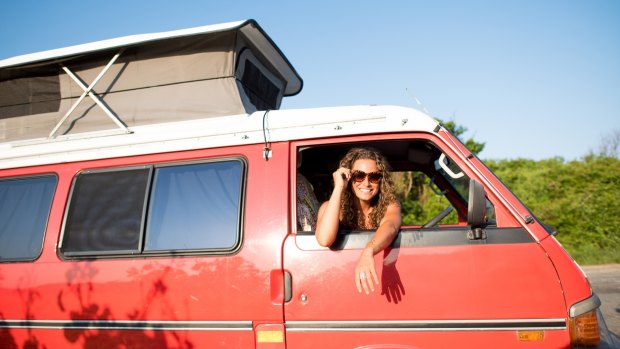
Credit: iStock
The pandemic has created a greater demand for experiences away from crowds. Until a coronavirus vaccine is found, that preference for private travel will probably continue.
According to a US Travel Association survey conducted in May, people feel more comfortable travelling in personal vehicles and staying in vacation rentals than they do taking flights, taking cruises and staying in hotels.In the US, interest in RVs has skyrocketed.
Dow, of the US Travel Association, predicts the pandemic will renew interest in the Great American Road Trip, with a particular focus on the outdoors, where travellers are less likely to face crowds.
"I think you're going to see that Montana, South Dakota and North Dakota, the more rural places, get a huge spike in travel," Dow said.
On the higher end, Misty Belles, the managing director of global PR for Virtuoso, a network of agencies specialising in luxury and experiential travel, has seen a rise in customer interest of private accommodations, such as villas and private islands, as well as private transportation.
"Being able to bypass the traditional airport experience is a big piece of that," said Belles.
Private jet company Sentient Jet has seen a spike of new customers during the pandemic. The company is bouncing back stronger than most travel brands, reporting almost 80 per cent of the business they had projected before the global crisis happened.
"A lot of that is being fuelled by personal travel," said Andrew Collins, chief executive and president of Sentient Jet. And Collins believes the new leisure travel customers that have been drawn to private aviation will stay.
"I passionately think that aviation has changed forever," he says.
Restaurants: Small restaurants and bars may be decimated for good
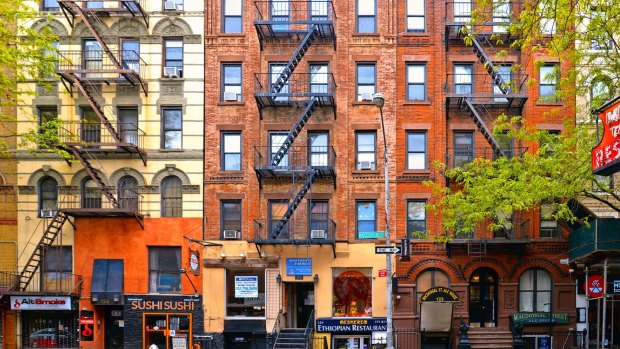
Credit: Getty Images
Amor y Amargo is one of those places you can't wait to tell your friends about when you get back from a trip. The bar in New York's East Village is mostly standing room, except for a handful of bar stools, and is known for its focus on bitters.
On March 16, Amor y Amargo's two locations closed indefinitely.
Like so many others, the bar has been selling to-go cocktails and drink kits, but that generates less than 1 per cent of normal revenue. Because Amor y Amargo and other hospitality establishments operate on thin margins and cash flow, the bar's beverage director, Sother Teague, said, "This break in that cycle is going to be difficult to restart the engine."
Many independently owned restaurants and bars, hallmarks of having a local experience while travelling, will not be able to restart at all. Investment bank UBS predicted in April that up to one in five restaurants in the United States may close permanently.
These small businesses are fighting herculean battles to stay in business during the pandemic. When owners aren't scrambling to keep up with new government requirements or pivoting business models (like turning into grocery stores or coming up with new takeout concepts), they're figuring out how to pay employees and mounting bills.
"I think the really fine dining restaurants will remain as is, the sort of middle ground of restaurants will shrink, and the fast-casual places like Shake Shack will stay afloat," said Kat Odell, a food and travel writer and author who eats at about 400 to 500 restaurants per year.
The week Amor y Amargo shut down, Ann Hsing, the chief operating officer of Los Angeles restaurants Pasjoli and Dialogue, was brainstorming with her team of managers to figure out how they would handle their own closures.
"The food that we do, we learned very quickly on the first day, is not very translatable to takeout," Hsing said. Dialogue has just 18 seats and serves an 18-to 22-course tasting menu by James Beard award-winning chef Dave Beran.
Hsing's brainstorming expanded beyond her own restaurants' needs to those in the community. She helped form the Independent Hospitality Coalition, a resource to support California's hospitality industry including representing the industry to local and state governments.
How tourism rebounds will also play a role in restaurants' recovery, particularly in cities such as New York and Los Angeles that rely on patronage from travellers as well as locals. Will the independent restaurant landscape remain vibrant, or become dominated by the chains that could afford to weather this storm?
"We will suffer greatly without the traffic from tourism," Amor y Amargo's Teague said. "Both in revenue flow as well as what it means to the space to have a mix of people in our house together enjoying what we offer."
Hotels: Cleaning and contact-free technology will be top priorities
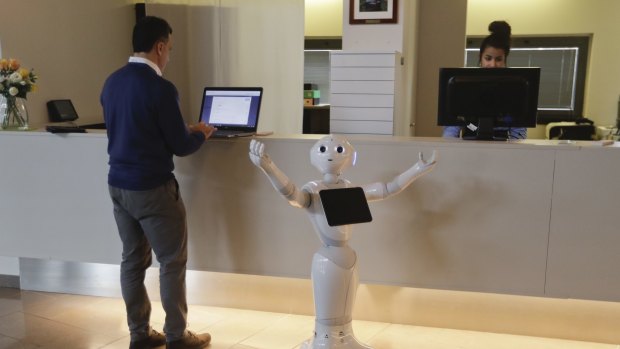
Credit: LUCA BRUNO
Hotels are elevating a couple of key amenities these days: cleanliness and health-consciousness. That means the things that might have mattered before - restaurants, pools, gyms, bars, make-your-own-waffle stations - are taking a back seat.
At the same time, experts say hotels have a difficult balancing act to pull off: While prioritising health and safety, they still need to make visitors feel comfortable and at home.
"The challenge will be how do we make sure we're not conveying reminders of the virus," said Kate Walsh, the dean of Cornell University's School of Hotel Administration. "We want to convey that this is a sanitised and healthy place, but we don't want it to feel so clinical like you're entering a hospital."
Guests should expect to see more frequent cleaning, transparent shields, abundant hand sanitisers, reminders about distancing and lobbies reconfigured to create more space. They should also expect to interact with fewer workers as hotels encourage people to check in online and use their phones as room keys.
"The use of technology to reduce direct contact with guests, lobby population and front desk queue is encouraged, where feasible," guidelines from the American Hotel & Lodging Association state. "In addition, contactless payment processes are encouraged, and when not available, employees should minimise contact as much as possible."
The association also recommends that housekeepers should not enter rooms during a stay unless they are asked to do so or get approval from guests. All that separation could make it difficult for hotels to deliver the welcoming atmosphere they promise.
"We're distancing the staff from the guest, and the heart of hospitality is conveying warmth and being taken care of," Walsh said. "How do you do that in a distanced way?"
She said she expects to see hotels adapt to the times by using outdoor space more creatively, removing loose items such as menus, minibar goods and pens from rooms, and either making workout equipment available in guest rooms or letting guests reserve private gym time. Room service will be of the knock-and-drop variety, while restaurants - which will need to abide by local and state capacity guidelines - are expected to offer more grab-and-go options.
Frank Lavey, the senior vice president of global operations for Hyatt, said in an email that the company is listening to guests and loyalty members to get a sense of what matters most to them when they return.
"Health and safety is a top priority, but there is also the need for connection, culture and new experiences," he said. "As the world begins to reopen, we are readying ourselves to help people do what they're longing to do - get back on the road to explore new places, feel the excitement of reconnecting with those they miss, destress and re-energize - once again experience the joy of travel, and do so safely."
Loyalty: Programs will introduce new, temporary perks
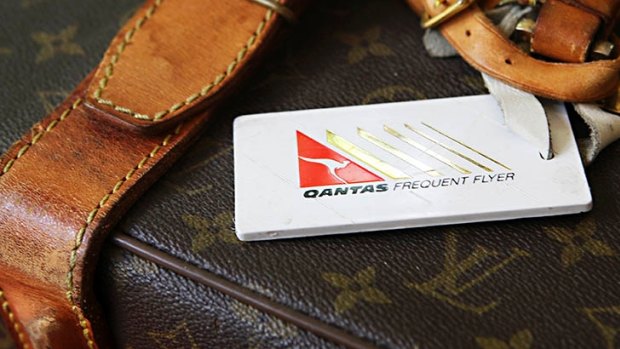
Credit: Peter Braig
When the pandemic struck, frequent travellers wondered what would happen to their loyalty program standings. The complicated system of miles, rewards programs, points and statuses relies on people travelling and spending money using travel credit cards. But with most people not travelling, does the system crumble?
According to loyalty program experts, that answer is no.
"Loyalty programs are huge cost centres for airlines and hotels," said Brian Kelly, the founder and chief executive of the Points Guy, a site that offers advice on those types of perks.
Airlines and hotels generate billions of dollars in revenue from selling miles and points to credit card companies. Some worry that because the status of travel is in limbo, travel perks won't be as powerful of an incentive for consumers to join and use branded travel credit cards. But that shouldn't be a major issue.
"They're trying to figure out ways to still get people to care about the miles, especially if they're not flying," said Rene de Lambert, founder of the travel blog, RenesPoints.
Kelly and Lambert say travel brands are sustaining consumer interest by offering new incentives, like having everyday spending count toward lifetime elite statuses, allowing travel loyalty points be redeemed for non-travel purchases and increasing the number of award seats on flights.
According to American Express data reported by Wirecutter, 134 per cent more American Express Membership Rewards were redeemed for non-travel purposes from mid-March to mid-April compared to that time frame in 2019.
These changes may not hold over after the pandemic, Kelly said, so they are going to benefit people who make the most of them in the near future.
"You better believe there will be people buying cheap flights to get a status that they never would have been able to achieve otherwise," he said. "There will be people making out like bandits."
Events: Large gatherings will creep back with caution - if at all
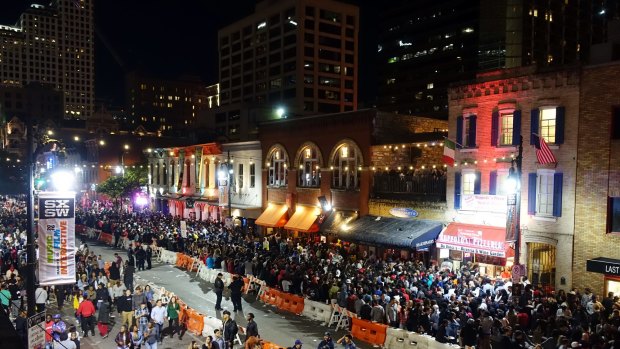
Credit: Jessica Gardner
Travelling for the express purpose of interacting with other people - dozens, hundreds or even thousands - is especially fraught now. It's still not clear what conferences, trade shows, political and fan conventions, concerts and festivals will look like in the coming months and years, if they happen at all.
High-profile events such as SXSW, the Cannes Film Festival and the 2020 Summer Olympics have all been cancelled or postponed. Most Republican National Convention festivities were moved from Charlotte, North Carolina, to Jacksonville, Florida, after North Carolina officials called for a downsized event with safety precautions. The Democratic National Convention appears to be moving toward a scaled-back or virtual event.
Julius Solaris, the editor of EventMB, which focuses on business meetings and events, said the first of such gatherings will probably be geared toward local audiences in large cities, rather than events that draw national and international crowds.
Those early meetings, he said, should be shorter - a single day rather than several, with sessions that last no longer than 30 minutes. Solaris said attendance will need to be slashed so there's enough room to keep people distanced in meeting rooms. All of those conditions could make traditional events too costly to put on at all.
"It's just not going to be profitable for some events," he said. "They're not going to break even."
Solaris said he anticipates seeing some hybrids, which may include some people together in person while others participate virtually.
Festivals and outdoor events still face huge challenges as many states have limits on how many people can gather, as well as rules about social distancing. Events such as city art festivals, parades and community runs would be too difficult or pointless to operate under such rules.
"We aren't a model that you can change up," said Steve Schmader, the president and chief executive of the International Festivals & Events Association. "The model of getting people together in your community is the model."
He wondered how it would be possible to do temperature checks along a parade route, or make sure that everyone watching stayed six feet apart.
"We don't have the answers to that," Schmader said. "We're all going through a master's class we didn't ask to sign up for."
The Washington Post
See also: The one big issue that will stop Australians travelling overseas
See also: The 11 destinations Australians should be able to visit in 2021
Sign up for the Traveller newsletter
The latest travel news, tips and inspiration delivered to your inbox. Sign up now.